Caryn’s Thoughts

 Christopher Petersen became my grandson 25 years ago today. He was the baby that changed my title from mom to grandmother. It amazes me that it has been a quarter of a century already. So much has changed, and yet it seems like it was just yesterday. From the wide-eyed little boy to the dad he is now…he has blessed us along the way, and I know that the future will be wonderful too. Chris and his fiancée, Karen have two beautiful children, Cambree and Caysen. Their life is so blessed, and that makes me so happy for them.
Christopher Petersen became my grandson 25 years ago today. He was the baby that changed my title from mom to grandmother. It amazes me that it has been a quarter of a century already. So much has changed, and yet it seems like it was just yesterday. From the wide-eyed little boy to the dad he is now…he has blessed us along the way, and I know that the future will be wonderful too. Chris and his fiancée, Karen have two beautiful children, Cambree and Caysen. Their life is so blessed, and that makes me so happy for them.
When I think of the little boy Chris was and how excited he was to get a brother of his own. I think Chris liked 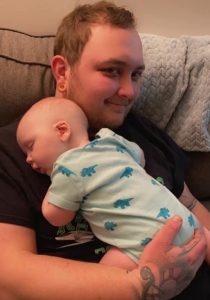 babies even then, or maybe it was because his brother, Josh was his brother. Chris wanted to help and couldn’t wait until Josh could play. That kind of kid love has remained. He still loves the playtime he has with his babies. Chris is patient and fun-loving, and that makes the kids love hanging with Daddy. Chris and Karen have that in common. They both love kids, and kid play, and they totally celebrate their family time. It makes for such a fun home, filled with lots of giggles and smiles. Cambree loves being with her daddy when he isn’t working, and Caysen is already his daddy’s snuggler whenever he gets the chance. Together, Chris and Karen are great parents, and I am so proud of them.
babies even then, or maybe it was because his brother, Josh was his brother. Chris wanted to help and couldn’t wait until Josh could play. That kind of kid love has remained. He still loves the playtime he has with his babies. Chris is patient and fun-loving, and that makes the kids love hanging with Daddy. Chris and Karen have that in common. They both love kids, and kid play, and they totally celebrate their family time. It makes for such a fun home, filled with lots of giggles and smiles. Cambree loves being with her daddy when he isn’t working, and Caysen is already his daddy’s snuggler whenever he gets the chance. Together, Chris and Karen are great parents, and I am so proud of them.
Chris works hard at his job at Craves, where he is a manager. His job is his means to a better life for his family, but the reality is that his family is what it’s all about. Nothing is more important than his family, and that is the way it should be. Kids grow up so fast, which is more and more evident to me when I realize that Chris is 25 years old. His kids will be the same way for him…growing up rapidly, and right before our eyes. It 
 seems impossible that that Chris would have two kids already, but he does, and of course, with Cambree’s arrival, I passed another milestone…great grandma. I could say that it will be a long time before I become a great great grandma, but then I won’t because I know how quickly those years can fly by. I’m glad that Chris and Karen are treasuring each and every day with their babies, because they really do grow us so quickly. Today is Chris’ 25th birthday. Happy birthday Chris!! Have a great day!! We love you!!
seems impossible that that Chris would have two kids already, but he does, and of course, with Cambree’s arrival, I passed another milestone…great grandma. I could say that it will be a long time before I become a great great grandma, but then I won’t because I know how quickly those years can fly by. I’m glad that Chris and Karen are treasuring each and every day with their babies, because they really do grow us so quickly. Today is Chris’ 25th birthday. Happy birthday Chris!! Have a great day!! We love you!!
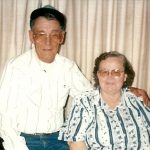
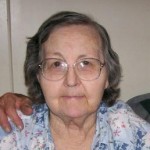 My mother-in-law, Joann Schulenberg lived a long life. The last five years were spent in Shepherd of the Valley Care Center with Alzheimer’s Disease. Her time at Shepherd was far from sad and miserable, as many people would have expected. Mom lived in her own little world, as Alzheimer’s patients do toward the end of the disease, and I’m here to tell you that her world was quite interesting. Her stories and her life in the past were very vivid in her mind, and she would happily tell those who would listen, all about it. I was one of the privileged few who got to hear all or most of her stories.
My mother-in-law, Joann Schulenberg lived a long life. The last five years were spent in Shepherd of the Valley Care Center with Alzheimer’s Disease. Her time at Shepherd was far from sad and miserable, as many people would have expected. Mom lived in her own little world, as Alzheimer’s patients do toward the end of the disease, and I’m here to tell you that her world was quite interesting. Her stories and her life in the past were very vivid in her mind, and she would happily tell those who would listen, all about it. I was one of the privileged few who got to hear all or most of her stories.
Mom did live an interesting life for sure. From her early childhood living in a sheep wagon in Montana, while her dad, Robert Knox tended the sheep; to her married years in Wyoming, raising her six children, Marlyce Schulenberg (who passed away in 1989), Debbie Cook, Bob Schulenberg, Jennifer Parmely, Brenda Schulenberg, and Ron Schulenberg; there was never a dull moment. She kept busy knitting, crocheting, sewing, canning, or in her later years, thinking she was still doing these things. There were certain things that she always thought were very cool in her life. Birthdays were always an important thing, and she loved the fact that she shared her with her first great grandson, Chris Petersen. Just like her mother before her got to share her birthday with her great granddaughter, Corrie Petersen, who is Chris’ mom. Those things were considered a “big deal” to her.
While she was at the nursing home, my mother-in-law was really quite the comedian. She would tell us things like she made the dinner, and that she did the laundry and the dishes. She was completely convinced that these things were true. Of course, no one argued the point with her either. What good would that have done? Her Alzheimer’s convinced her that she was right, and that was ok. She felt useful, and that was all she ever wanted. My mother-in-law always loved doing things for people. Her sweaters and afghans were stunning and 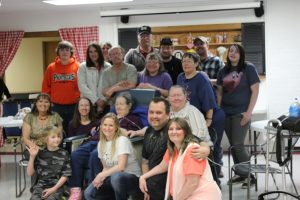
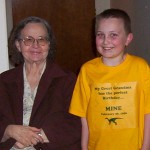 meticulous. She spent so many years knitting and crocheting, that I’m sure she could do both in her sleep. I think if she made a mistake, she would know it for sure. She could probably locate the mistake and fix it without waking up. She just knew every stitch that well. It makes me sad that her hands are stilled now, but I know that she is in a better place, and she has her full memory now too. Today would have been my mother-in-law’s 90th birthday. Happy birthday in Heaven, Mom. We love and miss you very much.
meticulous. She spent so many years knitting and crocheting, that I’m sure she could do both in her sleep. I think if she made a mistake, she would know it for sure. She could probably locate the mistake and fix it without waking up. She just knew every stitch that well. It makes me sad that her hands are stilled now, but I know that she is in a better place, and she has her full memory now too. Today would have been my mother-in-law’s 90th birthday. Happy birthday in Heaven, Mom. We love and miss you very much.

 As the world first began to be settled, the Hawaiian Islands were discovered, and in approximately 400AD Polynesians from the Marquesas Islands traveled the 2000 miles distance to Hawaii’s Big Island in canoes. To get to Hawaii, they navigated by the sun and stars, reading the winds, currents, and seabirds’ flight. The Polynesians sailed across the open ocean in great double-hulled canoes. The Polynesians brought with them items essential to their survival, including pigs, dogs, and chickens; the roots of kalo (a root vegetable and one of the most complex carbohydrates on the planet) and sweet potato; the seeds and saplings of coconut, banana, sugar cane, and other edible and medicinal plants. Polynesians were well-established on the islands when Polynesians from the Society Islands arrived in Hawaii. These newcomers became the new rulers of Hawaii. After a time of voyaging back and forth between the Society Islands and the Hawaiian Archipelago, contact with southern Polynesia ceased. During the 400 years of isolation that followed, a unique Hawaiian culture developed. That is similar to what happened when the pilgrims came to the new world…present-day United States. Once away from the culture one comes from, new ideas and new skills begin to form.
As the world first began to be settled, the Hawaiian Islands were discovered, and in approximately 400AD Polynesians from the Marquesas Islands traveled the 2000 miles distance to Hawaii’s Big Island in canoes. To get to Hawaii, they navigated by the sun and stars, reading the winds, currents, and seabirds’ flight. The Polynesians sailed across the open ocean in great double-hulled canoes. The Polynesians brought with them items essential to their survival, including pigs, dogs, and chickens; the roots of kalo (a root vegetable and one of the most complex carbohydrates on the planet) and sweet potato; the seeds and saplings of coconut, banana, sugar cane, and other edible and medicinal plants. Polynesians were well-established on the islands when Polynesians from the Society Islands arrived in Hawaii. These newcomers became the new rulers of Hawaii. After a time of voyaging back and forth between the Society Islands and the Hawaiian Archipelago, contact with southern Polynesia ceased. During the 400 years of isolation that followed, a unique Hawaiian culture developed. That is similar to what happened when the pilgrims came to the new world…present-day United States. Once away from the culture one comes from, new ideas and new skills begin to form.
The Hawaiian people were highly skilled farmers and fishermen, who lived in small communities ruled by chieftains who battled one another for territory. The new Hawaiian culture was a highly stratified society with strictly maintained classes of people. The chiefs headed the social pyramid and ruled over the land. The highest class, the Kahuna (professionals) were highly regarded and sometimes feared, they were experts on religious ritual or specialists in canoe-building, herbal medicine, and healing. The middle class, the maka`ainana (commoners) farmed, fished, built walls, houses, and fishponds…and paid taxes to the paramount chiefs and his chiefs. Kauwa, the lowest class, were outcasts or slaves. I can’t say that the class society was fair, because it really wasn’t, but many societies of that era were ruled in that way, and in reality, this class society still exists…maybe with slight differences, but it still exists.
In many ways, the culture was quite oppressive, especially to women. A system of laws known as Kanawai enforced Hawaii’s social order. Certain people, places, things, and times were considered sacred. Being near them was kapu, or forbidden except to a very privileged few. Women ate apart from men and were restricted from eating pork, coconuts, bananas, or a variety of other foods. Kapu regulated fishing, planting, and the harvesting of other resources, thus ensuring their conservation. Any breaking of kapu disturbed the stability of society, and the punishment for breaking this law was usually death.
Still, even with the strict laws, village life was rich and interesting. Hawaiians fished in coastal waters and collected shellfish, seaweed, and salt along the shore. They raised pigs, dogs, and chickens and harvested sweet potatoes, kalo, and other crops. Men pounded kalo into poi, which is the staple food of Hawaiians, while women beat the inner bark of wauke (paper mulberry) into kapa (bark cloth). The sounds of taro pounding and 
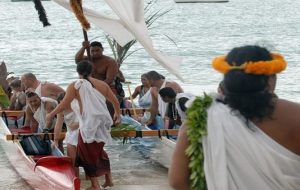 kapa beating were rhythmical signatures of Hawaiian village life. That changed dramatically after Captain James Cook arrived in 1778 and introduced the rest of the world to Hawaii. Cook, who named the islands after the Earl of Sandwich, returned a year later and was killed in a confrontation with Hawaiians at Kealakekua Bay, on Hawaii’s Big Island. Still his impact on the state of Hawaii remains.
kapa beating were rhythmical signatures of Hawaiian village life. That changed dramatically after Captain James Cook arrived in 1778 and introduced the rest of the world to Hawaii. Cook, who named the islands after the Earl of Sandwich, returned a year later and was killed in a confrontation with Hawaiians at Kealakekua Bay, on Hawaii’s Big Island. Still his impact on the state of Hawaii remains.
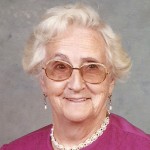
 My grandma, Hattie Byer was the only grandmother I had while growing up, because my dad’s parents passed before and shortly after I was born. Grandma was a multi-faceted person, probably by necessity. She and my grandpa, George Byer had nine children…seven girls and two boys. As a stay-at-home mom, grandma was the main disciplinarian in the family. Grandpa worked long hours, and while he could discipline the kids, he truly had a soft heart, and I think it pained him when he had to impose discipline on his kids. I think that happens a lot. In my family, I was the disciplinarian too. My mom, Collene Spencer has told me of some of the times she got on the wrong side of her mother, with negative consequences. Lets just say that when your brother is getting in trouble, you best stay out of it, because sassing your mom is never a good idea.
My grandma, Hattie Byer was the only grandmother I had while growing up, because my dad’s parents passed before and shortly after I was born. Grandma was a multi-faceted person, probably by necessity. She and my grandpa, George Byer had nine children…seven girls and two boys. As a stay-at-home mom, grandma was the main disciplinarian in the family. Grandpa worked long hours, and while he could discipline the kids, he truly had a soft heart, and I think it pained him when he had to impose discipline on his kids. I think that happens a lot. In my family, I was the disciplinarian too. My mom, Collene Spencer has told me of some of the times she got on the wrong side of her mother, with negative consequences. Lets just say that when your brother is getting in trouble, you best stay out of it, because sassing your mom is never a good idea.
Grandma was also the family chef. She made the best of so many dishes. Her Potato Pancakes have never been beaten,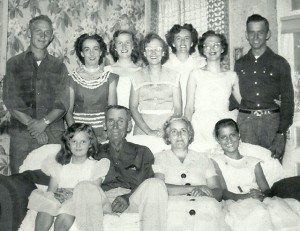 and yes, I’m biased, but so is every other person who has ever had them. Her Potato Milk Soup was heavenly, and her Oyster Stew was loved by many. Of course, it was my grandmother’s good cooking that created all the good cooks in the family. She taught her girls, and her boys too, to cook and they were and are still very good cooks. They don’t make exotic dishes, they make good old fashioned “Comfort Food,” and nobody makes it better than they do. Grandma could make a great mean out of almost nothing, and during the Great Depression, that is just what she did, as many a hungry guest can attest. Grandma always had extras at the table in those years. People instinctively knew where they could go to be welcomed to dine at a moment’s notice. None were turned away, and all ate to their fill.
and yes, I’m biased, but so is every other person who has ever had them. Her Potato Milk Soup was heavenly, and her Oyster Stew was loved by many. Of course, it was my grandmother’s good cooking that created all the good cooks in the family. She taught her girls, and her boys too, to cook and they were and are still very good cooks. They don’t make exotic dishes, they make good old fashioned “Comfort Food,” and nobody makes it better than they do. Grandma could make a great mean out of almost nothing, and during the Great Depression, that is just what she did, as many a hungry guest can attest. Grandma always had extras at the table in those years. People instinctively knew where they could go to be welcomed to dine at a moment’s notice. None were turned away, and all ate to their fill.
My grandmother was a woman of small stature, just 5′ in her tall days. I’m not sure where her height came from, because her sisters were certainly much taller than the was. Since I have no idea how tall her mother, or grandmothers were, I guess it might be quite normal for her to be short. Still I have often wondered how she 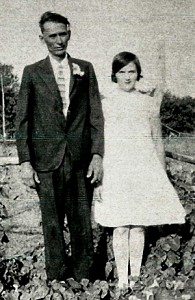
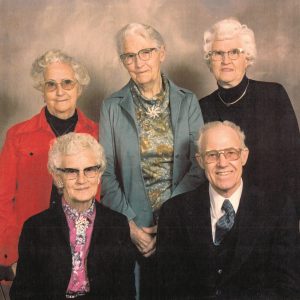 ended up so short. By the time I really gave much thought to her height, she had shrunk some, and probably stood 4’10” tall…or short, as it were. She didn’t need to be real tall to catch Grandpa’s eye, however. He was in love almost immediately. Grandpa stood over 6′ tall, so there was quite a contrast there, but they always made a sweet couple, and Grandpa was always proud of his beautiful wife. Grandma was a multi-faceted person, who could handle many things, and we have all always been very proud of her too. Today would have been Grandma Byer’s 112th birthday. Happy birthday in Heaven Grandma. I know you and Grandpa are having a wonderful celebration. We love and miss you very much.
ended up so short. By the time I really gave much thought to her height, she had shrunk some, and probably stood 4’10” tall…or short, as it were. She didn’t need to be real tall to catch Grandpa’s eye, however. He was in love almost immediately. Grandpa stood over 6′ tall, so there was quite a contrast there, but they always made a sweet couple, and Grandpa was always proud of his beautiful wife. Grandma was a multi-faceted person, who could handle many things, and we have all always been very proud of her too. Today would have been Grandma Byer’s 112th birthday. Happy birthday in Heaven Grandma. I know you and Grandpa are having a wonderful celebration. We love and miss you very much.
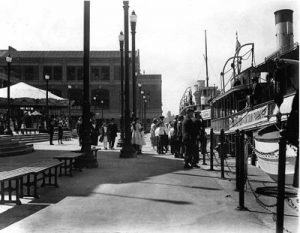 Any kind of explosive can lead to danger. There are some industries that use explosives in their daily activities, and for the most part, all is well and people are safe. Nevertheless, there are those few situations, which always seem like they are so common, when they make the news. In reality, they are probably very rare, although I can’t say that for sure. It just seems to me that if these explosions were common, we would find a different way of doing things.
Any kind of explosive can lead to danger. There are some industries that use explosives in their daily activities, and for the most part, all is well and people are safe. Nevertheless, there are those few situations, which always seem like they are so common, when they make the news. In reality, they are probably very rare, although I can’t say that for sure. It just seems to me that if these explosions were common, we would find a different way of doing things.
On the night of February 24, 1922, in McCook, Illinois, a powder magazine exploded in a stone quarry. The quarry at McCook was on the outskirts of Chicago. The the explosion occurred, it shook the entire city. I know that explosions can be felt for miles and miles, and can even show up on seismometers. Still, Chicago is a big city. It seems odd to think that such a big city could feel the effects of an explosion, but that was just the beginning.  Windows were shattered in the south and the west portions of the city shortly before 9:30pm. People began calling the emergency numbers and calling newspapers to find out where the explosion had occurred and how many people had been killed. It seemed that no one knew at first, but soon it became obvious. An inquiry by The Associated Press to Indianapolis soon brought a bulletin from LaFayette, Indiana, that the explosion had occurred at McCook, Illinois.
Windows were shattered in the south and the west portions of the city shortly before 9:30pm. People began calling the emergency numbers and calling newspapers to find out where the explosion had occurred and how many people had been killed. It seemed that no one knew at first, but soon it became obvious. An inquiry by The Associated Press to Indianapolis soon brought a bulletin from LaFayette, Indiana, that the explosion had occurred at McCook, Illinois.
With that information they were able to find out within a few minutes that there had been an accident at the quarry which is situated in a rather secluded spot. It was found that no one had been killed, but early reports had no explanation as to how it occurred. The first definite report of the blast reached a Monon railroad signal tower at Dyer, Indiana. It was then relayed to the Monon dispatcher at LaFayette, before it came back to 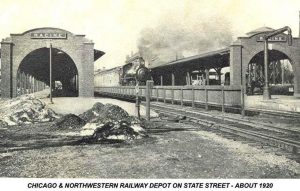 Chicago over The Associated Press wire.
Chicago over The Associated Press wire.
The McCook quarry has had a long history problems that have been the direct result of quarry blasting. The quarries need to blast for loosen up the stone, but the effects can be devastating, even causing train derailments at times. The public has at times complained about the damages, but there didn’t seem to be much that could be done about it. Pictures of cracked walls and broken windows have been brought in for emphasis. I guess that until someone comes u with a better way to get the rock out of the quarry, the city will be stuck with the problem for the foreseeable future.
 My grand niece, Christina Masterson is a dental hygienist by trade, who has been promoted to assistant office manager. As most of us know, 2020 was a tough year on many businesses, and dentists were among the hardest hit. I can’t tell you how many times my own cleanings have had to be rescheduled throughout the year. Of course, I am one person who had to be rescheduled, but for people in the field, like Christina, it was a complete shutdown for 6 to 8 weeks in March, due to Covid-19. Thankfully, Christina’s skills allowed her to pick up a few hours at an emergency dental clinic during those weeks. When the lockdown was ended, Christina wasn’t sure where things would stand for her. She was working at another office because her old office had closed, but she wasn’t really happy there. When her old office opened up again, they
My grand niece, Christina Masterson is a dental hygienist by trade, who has been promoted to assistant office manager. As most of us know, 2020 was a tough year on many businesses, and dentists were among the hardest hit. I can’t tell you how many times my own cleanings have had to be rescheduled throughout the year. Of course, I am one person who had to be rescheduled, but for people in the field, like Christina, it was a complete shutdown for 6 to 8 weeks in March, due to Covid-19. Thankfully, Christina’s skills allowed her to pick up a few hours at an emergency dental clinic during those weeks. When the lockdown was ended, Christina wasn’t sure where things would stand for her. She was working at another office because her old office had closed, but she wasn’t really happy there. When her old office opened up again, they  asked her to come back, and she was delighted. She had been praying for another job to open up for her, and her old office was her answer to prayer.
asked her to come back, and she was delighted. She had been praying for another job to open up for her, and her old office was her answer to prayer.
The pandemic left many people wondering if they would have a job to come back to. Christina’s strong faith in God helped her to get through these very tough times. Tough times don’t necessarily build faith, but if you have faith, you can get through the tough times. I would hate to face the tough times without God, and I’m sure Christina feels the same way. I think there were a lot of people who found themselves in a make or break time with their faith. Churches were closed, and depression set in with a lot of people. I am so thankful that Christina had already begun to cement her relationship with God before the pandemic hit. It gave her a  head-start on her faith in a time when she needed it most. Now that things are improving, she finds herself in a really good place.
head-start on her faith in a time when she needed it most. Now that things are improving, she finds herself in a really good place.
Now that things are opening up again, Christina has decided to focus on herself a little bit. The Covid lockdowns put a lot of people in an over-eating-under-exercising mode for a time. Many people found that as things opened up, their clothes didn’t fit like they used too. Now I don’t know if Christina put on any weight, but like many of us, she needed to get back to working out. So, Christina set herself to becoming the new and improved Christina. She joined a gym, started working out on a regular basis, and she started eating healthier and juicing. Christina has always stayed in pretty good shape, but I’m sure she is feeling so much better these days. Things in her life are lining up again, and 2021 is going to be a great year. Today is Christina’s 25th birthday. Happy birthday Christina!! Have a great day!! We love you!!
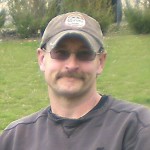
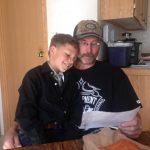 Some birthdays are different beyond anything we could have ever imagined. That is the kind of birthday my brother-in-law, Ron Schulenberg is having this year. Never in a million years did he expect to be a widower at the age of 53, but that is exactly where he finds himself, and his 13 year old son, Tucker, who also lost his mom. While Ron’s current situation is devastating, I am very proud of how he is handling it and the sadness that comes and go with both Ron and Tucker. While this year started it in the worst possible way, I pray that the rest of the year will get better. I know that his wife, Rachel would want Ron and Tucker, as well as her other children, Cassie and Riley, to be happy in life…as hard as that seems right now.
Some birthdays are different beyond anything we could have ever imagined. That is the kind of birthday my brother-in-law, Ron Schulenberg is having this year. Never in a million years did he expect to be a widower at the age of 53, but that is exactly where he finds himself, and his 13 year old son, Tucker, who also lost his mom. While Ron’s current situation is devastating, I am very proud of how he is handling it and the sadness that comes and go with both Ron and Tucker. While this year started it in the worst possible way, I pray that the rest of the year will get better. I know that his wife, Rachel would want Ron and Tucker, as well as her other children, Cassie and Riley, to be happy in life…as hard as that seems right now.
With Rachel’s passing came other changes for Ron. He had always worked nights, but with a 13 year old at home, he needed to change that to days, so that is what he did. It is a big change for him. He preferred the night shift, but it was important for Tucker, and that is all that matters now. Another change is that Ron is now the “Chief cook and bottle washer,” so to speak. He can cook, but Rachel was a phenomenal cook…a hard act to follow. I believe that Ron with find his own rhythm and cooking style. Tucker likes most of what he cooks now, and they will find things together that they like. Who knows, maybe Tucker will find some good recipes too.
We are all so thankful that Tucker has his dad, who adopted him on June 27, 2019. Tucker is not alone now. He has his dad to help him get through such a sad time in his life. And Tucker is helping his dad too. They depend on each other now, and work together to get through this. When I think of the terrible loneliness that happens after such a loss, it tears at my heart that these guys are going through it I know that in time, there will be less 
 pain, but right now, it is so strong and we have no way to ease their pain. The future will be different than they every planned for it to be, but they will get through it and we as a family will help them to get through it. Today is the first birthday Ron has had without Rachel in ten years, and that will make it a hard day, but I pray that he knows how much Rachel loved him, and that she wants the best for him and her children. She is in Heaven now, but her memory will always live on in our spirits. I pray that Ron can find some measure of happiness today too. Today is Ron’s birthday. Happy birthday Ron!! Have a great day!! We love you!!
pain, but right now, it is so strong and we have no way to ease their pain. The future will be different than they every planned for it to be, but they will get through it and we as a family will help them to get through it. Today is the first birthday Ron has had without Rachel in ten years, and that will make it a hard day, but I pray that he knows how much Rachel loved him, and that she wants the best for him and her children. She is in Heaven now, but her memory will always live on in our spirits. I pray that Ron can find some measure of happiness today too. Today is Ron’s birthday. Happy birthday Ron!! Have a great day!! We love you!!
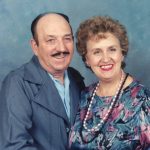
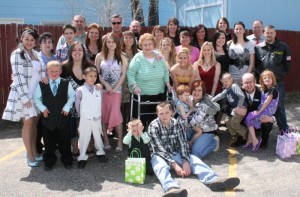 With each passing year, I find myself more and more amazed that my mom, Collene Spencer could be in Heaven for six years now. For those of us who miss her very much, that thought feels sad, but for my mom, who loved the Lord so much and was excited to see Heaven, these have been wonderful years, that seemed like seconds, I’m sure. Each day for her is now spent in rejoicing, because that was always what my mom wanted. She never desired anything more than to worship God and bask in His presence. Like one of the songs we used at her funeral, and those of many others now, tells us, “We can only imagine what it will be like!!”
With each passing year, I find myself more and more amazed that my mom, Collene Spencer could be in Heaven for six years now. For those of us who miss her very much, that thought feels sad, but for my mom, who loved the Lord so much and was excited to see Heaven, these have been wonderful years, that seemed like seconds, I’m sure. Each day for her is now spent in rejoicing, because that was always what my mom wanted. She never desired anything more than to worship God and bask in His presence. Like one of the songs we used at her funeral, and those of many others now, tells us, “We can only imagine what it will be like!!”
Mom enjoyed many things in her lifetime. She liked to travel, go camping, celebrate the holidays, and spend time with family, but more than anything, my mom loved to spend time in the Word. We bought he a Kindle when they first came out, and loaded it with Christian books and the Bible. It made it so much easier for her to read, because it was so light and easy to hold. She had dozens of books at her disposal, and she loved that. She spent her days reading and communing with God while her family was all at work. Anyone who knew her will tell you that my mom was “All about bringing others to the Lord.” She loved people, and didn’t want anyone to be lost, but she really wanted people to know how much God loves them. She never stopped telling others about God’s love for them, and that is to her credit. I can’t begin to count the number of people she led to the Lord in her lifetime.
Of the things on this Earth, the most important to mom was her family. She treasured each and every new baby that was added to her lineage, and I know she can’t wait to meet the ones who have arrived after her homegoing. She also treasured the new spouses and partners. There was a special place in her heart for each of these new additions. When someone loves one of her children, grandchildren, great grandchildren, and beyond, that makes them awesome in Mom’s eyes…and that makes them as much hers as if she had given birth to them. There was always room in Mom’s heart for more loved ones. She loved watching her family grow with each new addition. She considered each one perfect. It s such a wonderful way to look at people, and one 
 we should all incorporate into our own lives. When I think of the life lessons my mom gave us, these things are among the greatest. As I look forward to my own homegoing someday, I can only imagine just how wonderful it will be, and as I continue my life on Earth, it is my desire to live my life in such a way as to make my mom and my dad proud of the child they raised, and the woman I have become. I miss my mom very much, and I am forever grateful for the life she and my dad gave me. Happy 6th anniversary of your homegoing, Mom. We love and miss you very much and can’t wait to see you again.
we should all incorporate into our own lives. When I think of the life lessons my mom gave us, these things are among the greatest. As I look forward to my own homegoing someday, I can only imagine just how wonderful it will be, and as I continue my life on Earth, it is my desire to live my life in such a way as to make my mom and my dad proud of the child they raised, and the woman I have become. I miss my mom very much, and I am forever grateful for the life she and my dad gave me. Happy 6th anniversary of your homegoing, Mom. We love and miss you very much and can’t wait to see you again.

 My sister-in-law, Debbie Cook is an expert craftswoman. In her lifetime, she has made many, various gifts and items to sell, that she handmade with love. Many a baby has a sampler with their name and date of birth on it in cross stitch that is cherished by the child and its parents. Many is the person who owns a quilt made by Debbie’s hands. She has also done sewing through the years, making clothes for her girls, Machelle and Susan. Debbie, along with her parents, Walt and Joann Schulenberg and her sister, Brenda Schulenberg, had booths in many craft fairs over the years, though in recent years craft fairs have somewhat dwindled…a sad thing really, because they provided awesome, and sometimes one-of-a-kind, gifts for many people to give to loved ones.
My sister-in-law, Debbie Cook is an expert craftswoman. In her lifetime, she has made many, various gifts and items to sell, that she handmade with love. Many a baby has a sampler with their name and date of birth on it in cross stitch that is cherished by the child and its parents. Many is the person who owns a quilt made by Debbie’s hands. She has also done sewing through the years, making clothes for her girls, Machelle and Susan. Debbie, along with her parents, Walt and Joann Schulenberg and her sister, Brenda Schulenberg, had booths in many craft fairs over the years, though in recent years craft fairs have somewhat dwindled…a sad thing really, because they provided awesome, and sometimes one-of-a-kind, gifts for many people to give to loved ones.
In the years since she quit participating in craft fairs, Debbie has enjoyed camping a lot. Since her husband, LJ 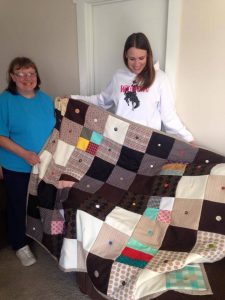 Cook retired, they have been able to go camping a lot more than they could before. In fact, they would probably live in the Big Horn Mountains all summer, if not year round. Of course, their girls, Machelle and Susan probably wouldn’t like that much, because they wouldn’t get to see them as often as they do now. Not that life doesn’t make it difficult, because everyone is busy, but if their parents lived in the mountains, it would be harder to go visit. For Debbie, living in the mountains wouldn’t hinder her hobbies much, because much of it can be done anywhere.
Cook retired, they have been able to go camping a lot more than they could before. In fact, they would probably live in the Big Horn Mountains all summer, if not year round. Of course, their girls, Machelle and Susan probably wouldn’t like that much, because they wouldn’t get to see them as often as they do now. Not that life doesn’t make it difficult, because everyone is busy, but if their parents lived in the mountains, it would be harder to go visit. For Debbie, living in the mountains wouldn’t hinder her hobbies much, because much of it can be done anywhere.
Debbie loves being a grandma, and enjoys spending time with grandsons, Weston and Easton Moore, and granddaughters, Jala Satterwhite and Kaytlyn Griffith. These days, since the kids are all getting grown up, they are a big help to her and LJ too. She used to spend more time with the kids, of course, because when they were in school they often came to her house after school, but now the older three are driving, so there is no need to pick them up or babysit them. It is always sad when the active grandparent days are behind us, then we must wait for the great grandchildren to begin to come. Of course, we still have our grandchildren, but we don’t have the babies, and I think that makes every grandparent a little bit sad.
As life goes on, Debbie and LJ are looking forward to many more years of camping in the Big Horns with their family. They all love to camp as a group, sitting around the campfire at night just enjoying the warmth and 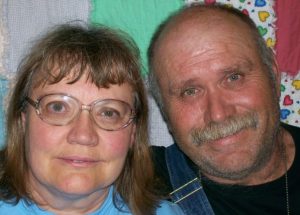 !!
!!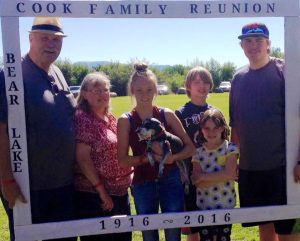 comradery, as well as the occasional moose that strolls through the camp. They used to go hunting, and liked getting the wild meat, but they haven’t really done that in a number of years. Now they hunt with their eyes, looking for the best specimens, but not shooting them. In that, they have had great success. Today is Debbie’s 68th birthday. Happy birthday Debbie!! Have a great day!! We love you!!
comradery, as well as the occasional moose that strolls through the camp. They used to go hunting, and liked getting the wild meat, but they haven’t really done that in a number of years. Now they hunt with their eyes, looking for the best specimens, but not shooting them. In that, they have had great success. Today is Debbie’s 68th birthday. Happy birthday Debbie!! Have a great day!! We love you!!
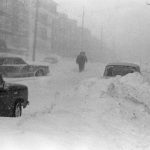
 As the United States is in the grip of a fierce snow storm, I am reminded of another snow storm that happened February 21 – 23, 1971. The storm is considered Oklahoma’s extreme storm. This blizzard buried northwestern Oklahoma under as much as three feet of snow, and that doesn’t include the drifting. The town of Buffalo was the hardest hit. They reported 23 inches of snow on the 21st alone, and a state-record snow depth of 36 inches by the morning of the 24th. The northern part of the state was just buried.
As the United States is in the grip of a fierce snow storm, I am reminded of another snow storm that happened February 21 – 23, 1971. The storm is considered Oklahoma’s extreme storm. This blizzard buried northwestern Oklahoma under as much as three feet of snow, and that doesn’t include the drifting. The town of Buffalo was the hardest hit. They reported 23 inches of snow on the 21st alone, and a state-record snow depth of 36 inches by the morning of the 24th. The northern part of the state was just buried.
Oklahoma tends to be a mild weather state, with temperatures in December, January, and February averaging in the 50s. This week is the anniversary of the 1971 blizzard, which was likely the most intense winter storm ever to hit the Sooner State, although the current storm might rival it now. With the current storm, Oklahoma is seeing temperatures averaging -6°. The prior record was in 1909 at 7°. The power company had had to implement rolling blackouts to assure that the power grids don’t fail. I don’t think they have received the amount of snow with the current storm, but the severity is very similar, when you think about it. Anytime a storm is is bad enough to shut things down, especially the power, it is severe.
When the blizzard of 1971 finally ended, 36 inches of snow was measured in Buffalo, which was the state’s record for the highest snowfall total, but the snow drifts measured as high as 20 feet tall. While northwestern Oklahoma was hit very hard, just a short distance to the west in the Oklahoma Panhandle, only light snow fell with Boise City receiving only 3 inches and only 2 inches in Kenton. The 1971 storm put ranchers in a precarious position until C-124s from the Oklahoma Air National Guard dropped 150 tons of hay to stranded Oklahoma cattle. Local cattleman flew along with the aircraft to guide the aircrews to the stranded cattle. The massive loss numbers of 15,000 in livestock accounted for much of the $2 million in damages.
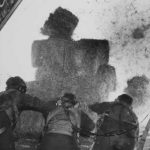
 The vicious storm became known as the 84-hour blizzard. It actually occurred across the eastern half of the Texas and Oklahoma Panhandles. The storm his the worst un Oklahoma, but in the region, 8 deaths were reported…7 in Pampa, 1 in the Oklahoma Panhandle. The average drifts were 10 to 20 feet. Storms like these will not likely be soon forgotten, if they are ever forgotten. People are really never prepared for such cold temperatures and so much snow in the southern states. We can try to prepare, but when year after year goes by without such a sever storm, we soon become complacent, until the next one hits us, that is.
The vicious storm became known as the 84-hour blizzard. It actually occurred across the eastern half of the Texas and Oklahoma Panhandles. The storm his the worst un Oklahoma, but in the region, 8 deaths were reported…7 in Pampa, 1 in the Oklahoma Panhandle. The average drifts were 10 to 20 feet. Storms like these will not likely be soon forgotten, if they are ever forgotten. People are really never prepared for such cold temperatures and so much snow in the southern states. We can try to prepare, but when year after year goes by without such a sever storm, we soon become complacent, until the next one hits us, that is.

